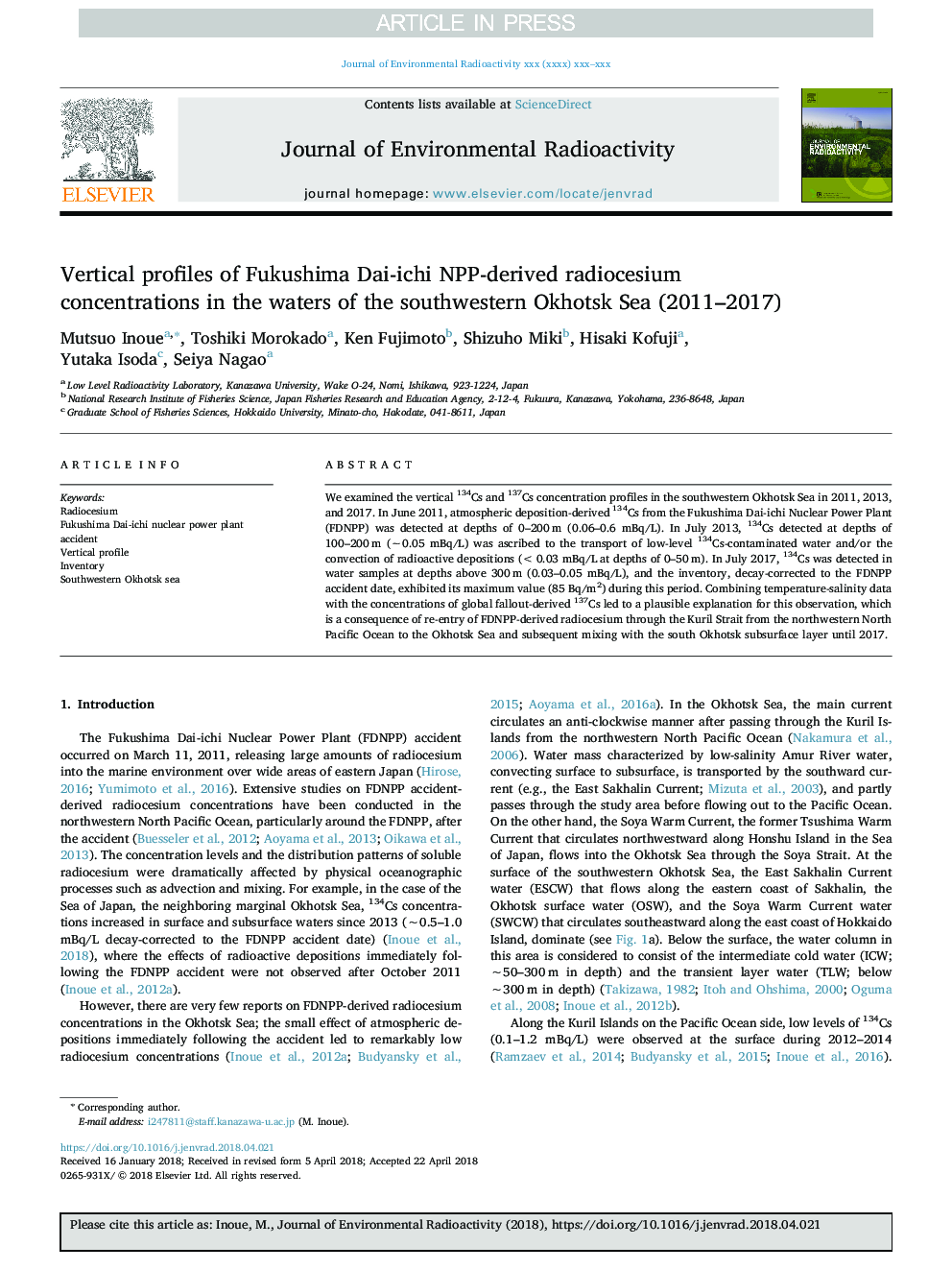| Article ID | Journal | Published Year | Pages | File Type |
|---|---|---|---|---|
| 11007409 | Journal of Environmental Radioactivity | 2018 | 7 Pages |
Abstract
We examined the vertical 134Cs and 137Cs concentration profiles in the southwestern Okhotsk Sea in 2011, 2013, and 2017. In June 2011, atmospheric deposition-derived 134Cs from the Fukushima Dai-ichi Nuclear Power Plant (FDNPP) was detected at depths of 0-200â¯m (0.06-0.6 mBq/L). In July 2013, 134Cs detected at depths of 100-200â¯m (â¼0.05 mBq/L) was ascribed to the transport of low-level 134Cs-contaminated water and/or the convection of radioactive depositions (<0.03 mBq/L at depths of 0-50â¯m). In July 2017, 134Cs was detected in water samples at depths above 300â¯m (0.03-0.05 mBq/L), and the inventory, decay-corrected to the FDNPP accident date, exhibited its maximum value (85 Bq/m2) during this period. Combining temperature-salinity data with the concentrations of global fallout-derived 137Cs led to a plausible explanation for this observation, which is a consequence of re-entry of FDNPP-derived radiocesium through the Kuril Strait from the northwestern North Pacific Ocean to the Okhotsk Sea and subsequent mixing with the south Okhotsk subsurface layer until 2017.
Related Topics
Physical Sciences and Engineering
Energy
Nuclear Energy and Engineering
Authors
Mutsuo Inoue, Toshiki Morokado, Ken Fujimoto, Shizuho Miki, Hisaki Kofuji, Yutaka Isoda, Seiya Nagao,
